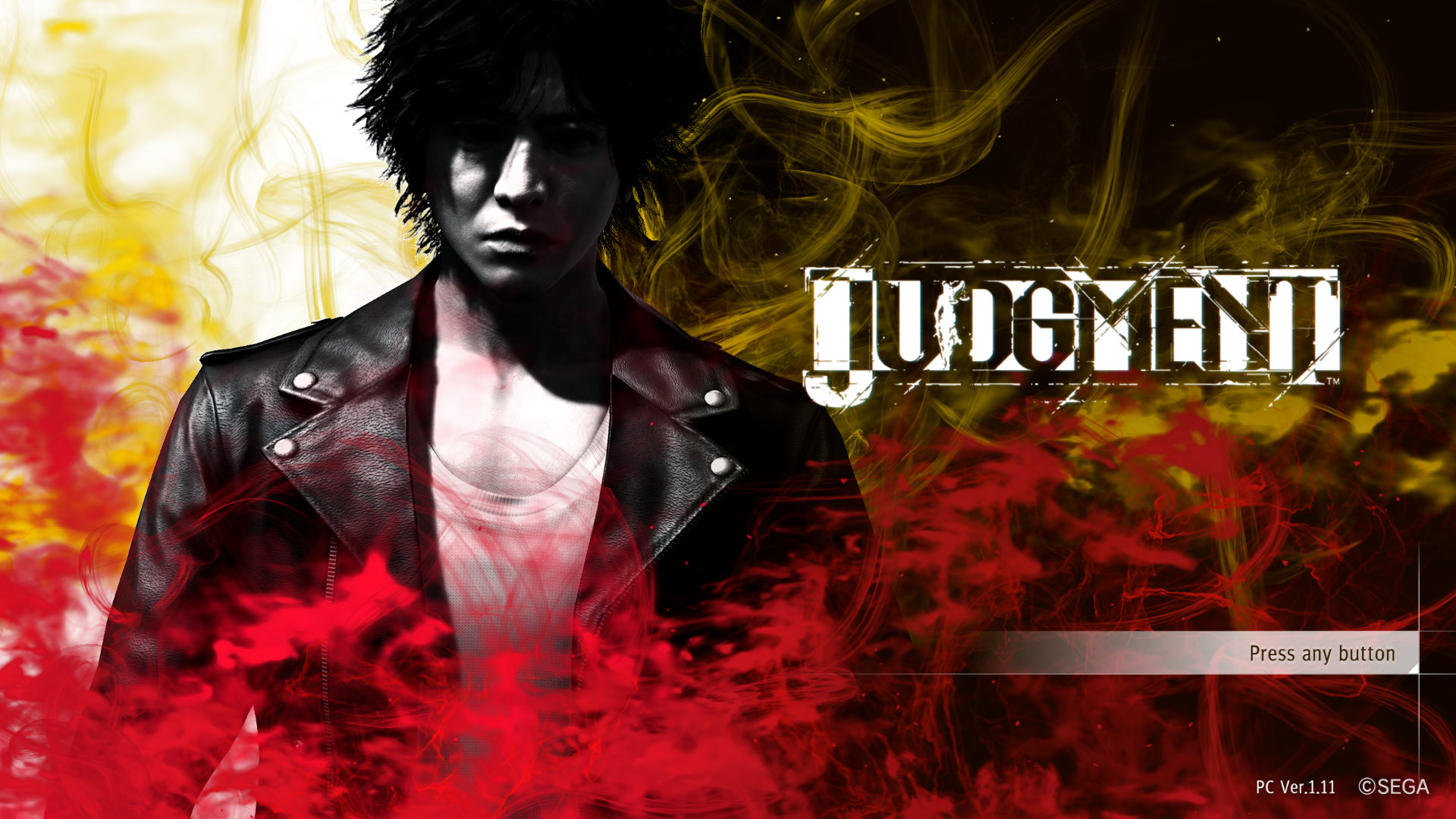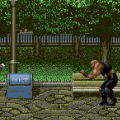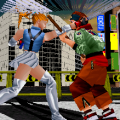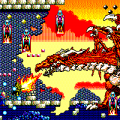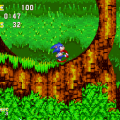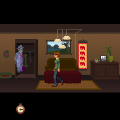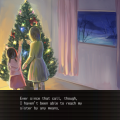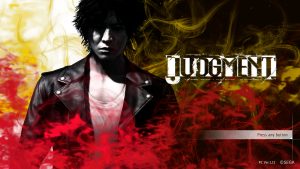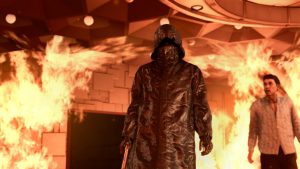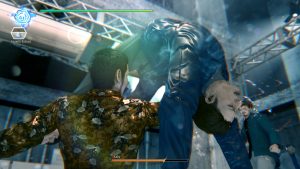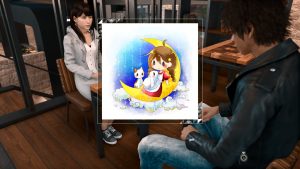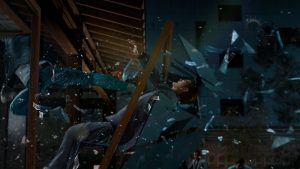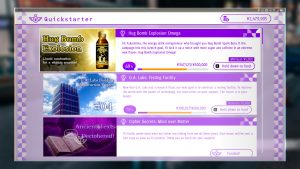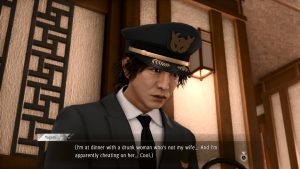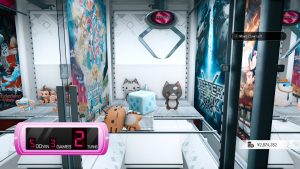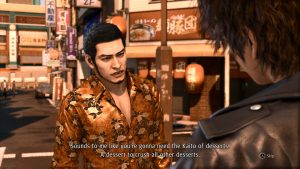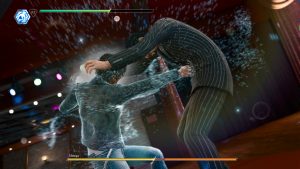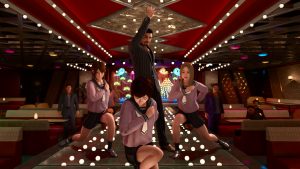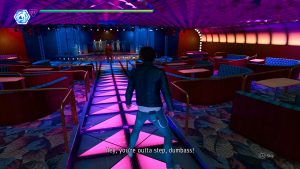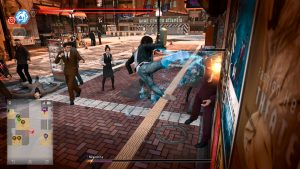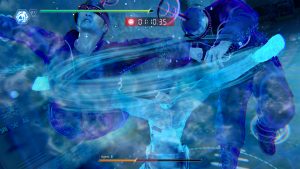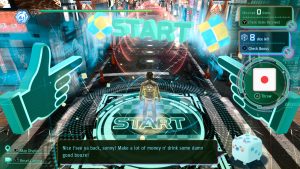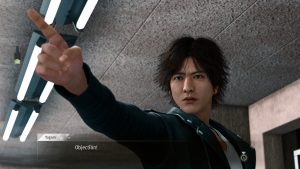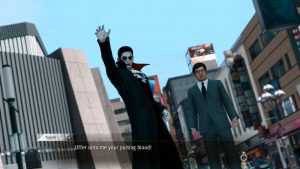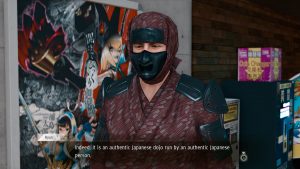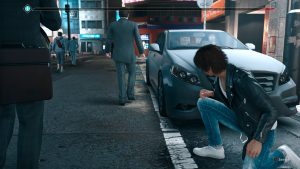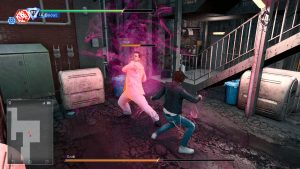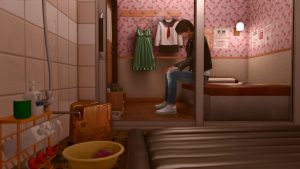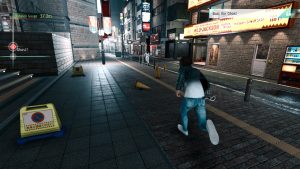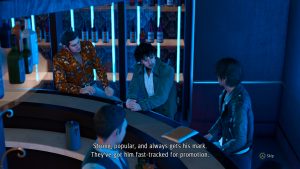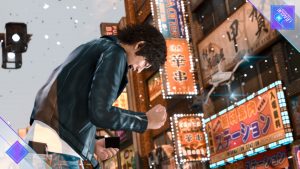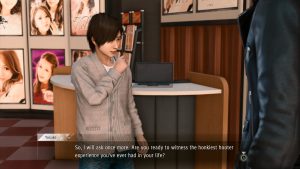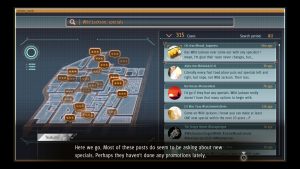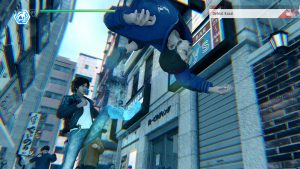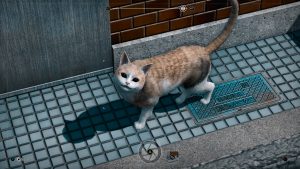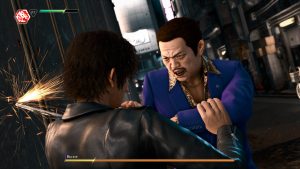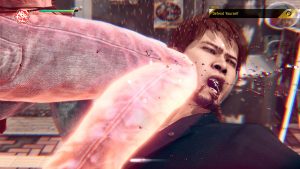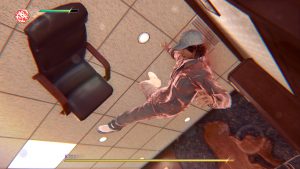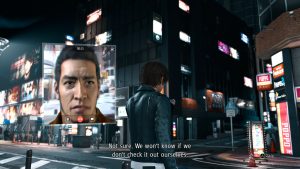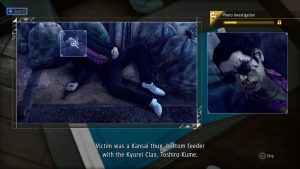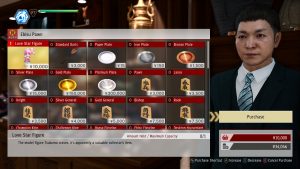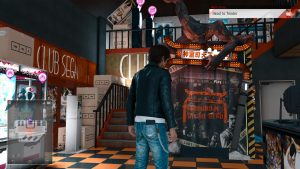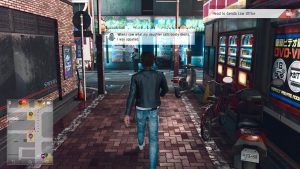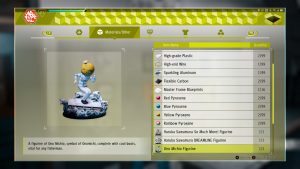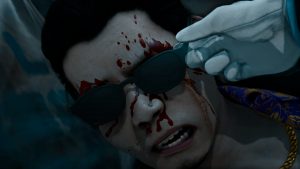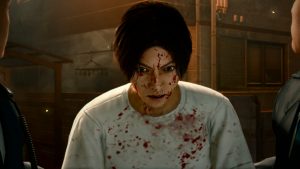- Judgment
- Lost Judgment
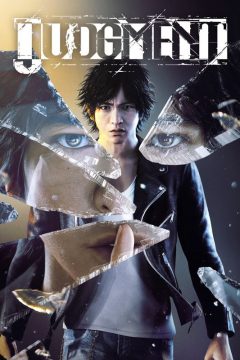
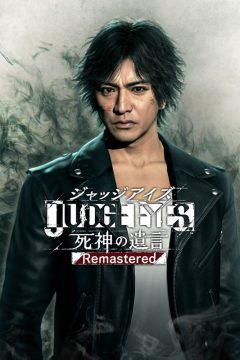
Around 2015, Sega and Ryu Ga Gotoku Studios put into motion Project Judge, an attempt by the Yakuza/Like A Dragon studio to do something new, having spent ten years telling the adventures of Kazuma Kiryu and his exploits with the Tojo Clan. While the team would manage that eventually by turning their popular franchise into a turn based RPG with Yakuza: Like A Dragon, Project Judge was a more ambitious project taking inspiration from the likes of Ace Attorney, detective serials, and legal dramas, creating a new contrasting deductive gameplay mix to go along the crime boys beating up each other with bikes while wearing disco suits.
The end result was Judgment, or JUDGE EYES in Japan, and it…sort of did that? Kind of?
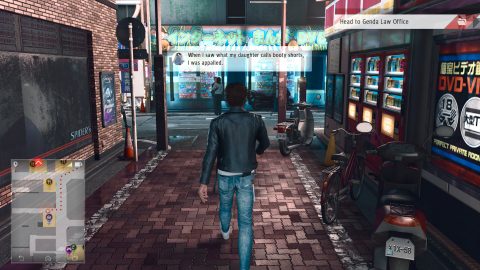
The premise of Judgment is that Takayuki Yagami (played by and modeled on Japanese actor Takuya Kimura) is a defense attorney that quit his profession at Genda Law after a man he got off the hook supposedly murdered his girlfriend, blaming himself for an innocent person’s death. Now he works as a private detective in the crime ridden Kamurocho, alongside his long time friend and ex-Yakuza Masaharu Kaito.
Fate intervenes as an old co-worker hires him to help bolster a case to get one Kyohei Hamura, captain in the small time Matsugane family of the Tojo Clan (the same family Kaito was kicked out of), off on the charge of murder – the finger pointed at him as a serial killer going after a rival yakuza clan. As the case wraps up, Yagami and Kaito realize Hamura knows something about the killings and look into them, Yagami naming the killer as “The Mole.” What they end up finding out is a much more complicated and far darker mystery than just a random serial killer or gang war, and Yagami is going to have to confront his past if he hopes to solve it – or even come out alive.
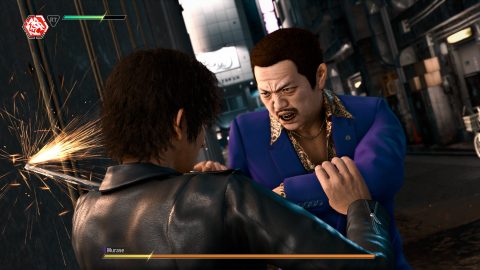
Enough good things can’t be said about Judgment‘s first chapter, one of the most dense and exciting starts to any RGG Studios game, up there with Yakuza 0. Not only is there plenty of action, including several tough boss fights, the investigation moves at a steady pace, and new mechanics meant to be unique to Judgment are introduced in engaging ways. The base of Yakuza is there, with free roam around the city, tons of side activities (including classic Sega games), and lots of fighting, but there’s real effort to put across that Yagami approaches problems differently from Kiryu and friends.
Yagami can pick locks, take pics for evidence, look over crime scenes or pictures to find important details, wear disguises, tail people in a sort of stealth follow minigame, chase suspects (redone from its Yakuza 4 introduction), and various other neat things that spice up his side stories and adventures. Yagami also fights differently, having no option to hold any weapons on him (though he’ll use stuff in the street in a scuffle if desired).
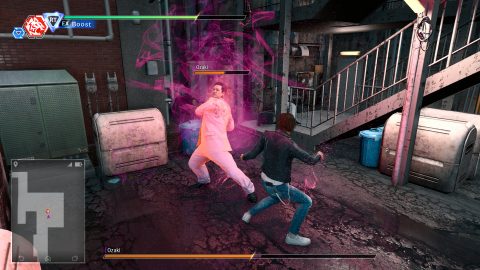
Instead, his fighting style is very technical, with more complex combos, EX moves (this series’ version of heat, which slowly builds instead of quickly building or falling with your performance) done at the end of certain combos, unique actions in his beefed up EX mode, and even two styles to play with. Crane is for groups, with wide kicks, and the more punch focused tiger is for one on ones. He even has a nifty wall jump that can be used to lead into attacks and punish defensive enemies with a surprise.
Further, his dialog is spiced up with multiple choices that can net extra skill points (this game’s experience). Think like a detective and pick the right questions, and you get rewarded for it. All of this gives the game a unique flavor…at least at first. As the team finished making that dense first chapter, it quickly became clear they would not be finishing the game in time if every chapter was like that, due to RGG Studios’ insane turn around time.
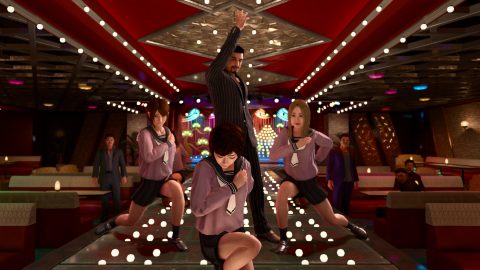
This results in the main story segments being significantly watered down closer to more traditional Kiryu adventure stuff, even down to how Yagami solves mysteries. He mostly goes from place to place, talks with people, and eventually punches his way to a break-through. He actually acts like Kiryu a lot, often with a stoic persona, he just gets to make one-liners and smile or bumble here and there. Kaito usually has to liven things up, a more interesting personality on the whole, even with a hook as a sleuth who used to be a yakuza.
As a RGG Studios action RPG, Judgment is a good one, but there is a pretty clear thinness that becomes more obvious the further you get. Side cases and friend events, the replacements of substories, get increasingly simplistic and tend to reuse tailing or chasing a lot. The idea of friend events and city reputation is cool, getting friends increasing your rep and unlocking new cases from more clients, but how weirdly some friends are placed can make it a tad annoying if you want to see the end of the Keihin gang story. Speaking of them, it starts to get really obnoxious as you get text messages about them coming to town randomly, causing the street encounters to grow tougher and more numerous until you beat their bosses or wait it out.
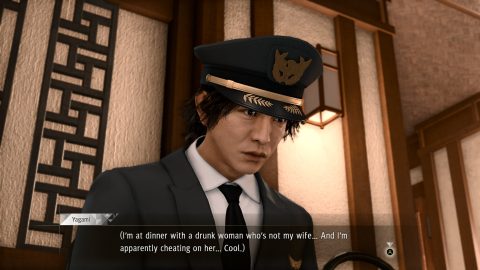
This all goes double for the main story, as the unique mechanical ideas start to become less and less frequent in favor of more fighting and going from location to location. There’s also one new idea mixed in with combat called deadly attacks that both do big damage, and lock off your max health until you heal at a sewer medic or use a med kit. Bullets also do this, and one of the Keihin gang bosses uses two guns in fights. You can see the problem. The idea that Yagami is more fragile and this pushing that idea isn’t a bad one, but the execution means you’ll be saving your precious yen more often instead of spending money on random stuff or activities, just in case you need some med kits for tough segments.
The real meat of the issue here is definitely the story, though, which was wrangled from a base line provided by then studio head Toshihiro Nagoshi into its finished form by Tsuyoshi Furuta. The latter has become a contentious figure among in the know Yakuza fans. Previous getting head writing roles for spin-offs like Binary Domain and Yakuza: Dead Souls, he finally got to lead write a main entry with Yakuza 6, which has gotten a mixed reception. While the franchise has always had a bit of a conservative streak, Yakuza 6 is where things really went too far and the franchises lesser habits (poor treatment of female characters, issues writing Chinese and Korean characters, etc.) hit a boiling point.
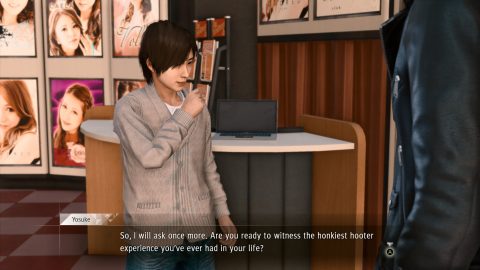
Judgment isn’t too bad in comparison, though its little series as a whole seems to be really weird about women, even for RGG’s other output. From rather gross sexualization (especially the second Saori segment) and one pretty awful scene where Yagami’s love interest nearly gets kidnapped (she does nothing of any real significance all game despite being a prosecutor), they’re clearly cribbing from the famed Kojima school of being horny on main with old man brains. The script is also pretty exposition and dry conversation heavy, which you’ll either gel with or not, depending on how much the story is working for you. The core of most of the issues, however, seems to be the structure rather than the content.
Furuta seems to have a few issues as a writer he was still working through on this one. He can write some great villains, help produce some strong revelation scenes, and has a great sense of characterization, but the man cannot structure a plot in an interesting way particularly well. This really becomes apparent in his attempt at a mystery story, where the characters figure out the mystery halfway through during a brainstorming session, and the rest of the game is just them sort of bumbling from developments to eventually fill in a few details. Even a late game twist revolving around one character’s identity falls flat because nothing actually happens as a result of that revelation, when the build up was there and then just tossed away for a different, less interesting twist you probably figured out many, many hours earlier.
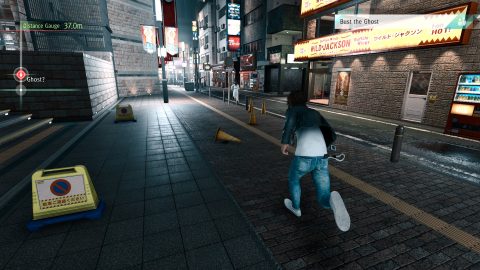
Just like Yakuza 6, it’s not till the very end of the game does anything interesting get done with the actual main antagonist, which is too little, too late by then. The one upside of all this is that the cutscene directors are very good at selling big moments, so the game never gets boring as you go along. The beats are properly emotional and engaging, but it’s only after you finish that you start to realize that there was a real lack of substance, thematically and in terms of solving the mystery. That’s not even getting into points where they just interrupt main story progress for a completely unrelated side case you have to do in order to get back to the main story, or dedicated several minute chunks just having characters go on and on about Alzheimer’s (often with misleading statistics Furuta misread).
The side stuff is also mixed, but overall more on the positive end of things. Drone racing is a really fun addition with some customization to mess with, rewarding build experimentation. The ridiculous VR game that gives free money (you need passes to play it) has a fun aesthetic and really puts you through your paces with minigame and combat challenges. Some Sega arcade games previously playable in the Yakuza games make their appearance here too, but new to the series is Motor Raid, a futuristic motorcycle racing game originally released on Model 2 hardware that never previously appeared on consoles. Side cases still manage to be pretty engaging, managing to deal with a lack of mechanical variety with good old goofy side story writing. The Terrible Trio stick out as the most memorable side case line, the writers having a lot of fun with perverted humor in a set up where it actually works somewhat. Add in all the old attractions, an SP rewarding to do list on your phone, and extracts for making game breaking superpowers (mainly a crutch for those struggling with the combat), and there’s plenty to do. You can even scan QR codes for drone parts and hidden moves, including the as always broken Tiger Drop.
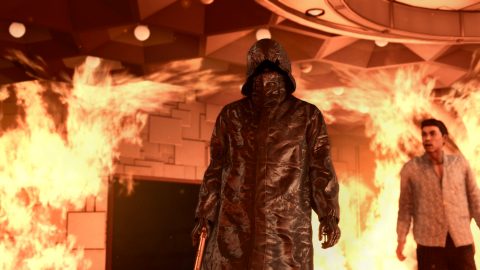
As for the presentation, it’s a Dragon Engine game, complete with the goofy physics. It’s about what you’d expect from RGG, experimenting with scene styles to cut costs and such, and several characters being based on their real life actors. It’s stylish flairs for gameplay mixed with increasingly realistic styles that mixes surprisingly well in how they contrast. This is also the first RGG joint in ages to have an English dub, and it’s very good, especially Crispin Freeman as Kaito.
The soundtrack is also pretty solid, with the stand outs being the surprisingly energetic piece for the boss of the Keihin, and The Mole fight track and its many versions called Penumbra. When you have managed to make bongos sound threatening, you have successfully made a good boss theme. It’s an interesting mix of that, chanting, electronic production, and a strong strings section that makes for a murky and threatening feeling piece that starts to get under your skin before it picks up. Fitting for easily one of the hardest non-bonus bosses of any RGG game. Worth also pointing out this game’s take on the Amon theme, an overly epic remix of Ishin‘s Amon theme meant to hype up the newest of the Amon clan that awaits completionists at the end of your case list.
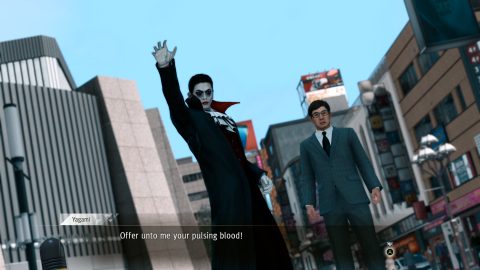
There was definitely a lot of ambitious ideas that didn’t get to get fleshed out as originally planned, but Judgment is still a solid RGG Studios game. It’s a big, weird mix of good and bad ideas with good execution overall, a minor stumble into something much more impressive just three years later. It is worth picking up, and very approachable for non-Yakuza fans, just temper your expectations for a complex mystery thriller.
That sequel, though? Oh, that’s an entirely different story.
Sort of.
